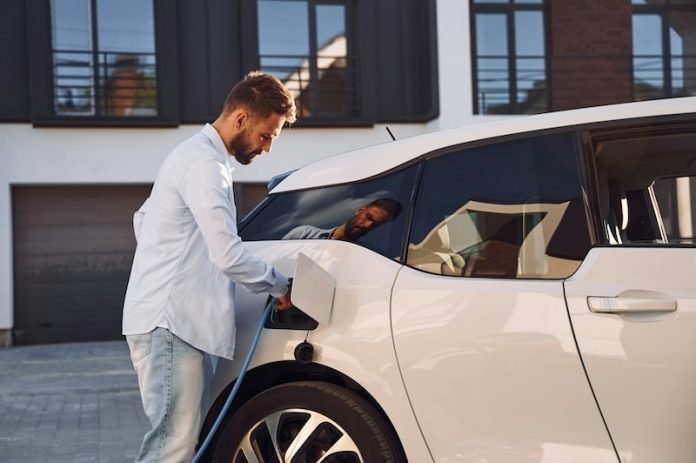
At the Consumer Electronics Show (CES) in 2024, the spotlight was on the latest in artificial intelligence and healthcare advancements.
But, it was battery technology that truly stole the show, proving to be a crucial element in powering these innovations with greater efficiency.
Electric vehicles (EVs), in particular, are benefiting from these technological strides. Nowadays, EVs can cover a distance of about 700km on a single charge, and researchers are on a mission to push this limit to 1,000km.
The secret ingredient researchers are excited about is silicon. Silicon is seen as a potential game-changer for the batteries of electric vehicles because it can hold a lot of power.
But, there’s a catch. Silicon expands and contracts a lot when it charges and discharges, which poses a big challenge for its use in batteries.
A team from Pohang University of Science and Technology, including Professor Soojin Park, PhD candidate Minjun Je, and Dr. Hye Bin Son, have made a breakthrough in this area.
They’ve developed an affordable and durable battery system that could significantly improve how long electric vehicles can run. Their work, showcasing this development, was shared online in Advanced Science on January 17th.
Using silicon in batteries isn’t straightforward because of its tendency to swell up to more than three times its size when charged, which can mess with the battery’s performance.
While making silicon particles really small (nano-sized) can help with this problem, it’s a very expensive and complicated solution.
On the other hand, slightly bigger (micro-sized) silicon particles are much cheaper and can store a lot of energy, but they also face challenges due to their expansion.
The team from POSTECH tackled these issues with a smart solution. They used gel polymer electrolytes, a type of material that can act like a liquid but has the stability of a solid.
This gel helps control the swelling of the silicon particles and keeps the battery stable.
To make their battery, they used a special technique that connects the silicon particles to the gel electrolytes very tightly, which helps handle the stress caused by the swelling and shrinking of the silicon.
This approach allowed them to use much larger silicon particles than usual, which are cheaper and can store more energy.
Their invention not only proved to be stable but also performed similarly to traditional batteries, with a 40% improvement in how much energy it can store. This is great news because it means the battery can be made easily and put into use right away.
Professor Park highlighted the significance of their work, stating that even with larger silicon particles, they’ve managed to create a stable and high-performance battery.
This breakthrough is a big step towards making high-energy lithium-ion batteries a reality, bringing us closer to the dream of electric vehicles that can drive longer distances on a single charge.
Their research was supported by the National Research Foundation of Korea, underlining the importance of continued investment in innovative technologies that can transform our daily lives.
This advancement in battery technology not only promises to enhance electric vehicles but also represents a pivotal shift towards more sustainable and efficient energy solutions for the future.
The research findings can be found in Advanced Science.
Copyright © 2024 Knowridge Science Report. All rights reserved.



